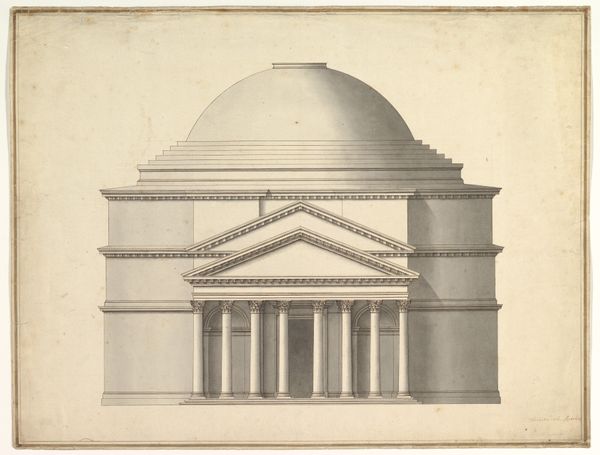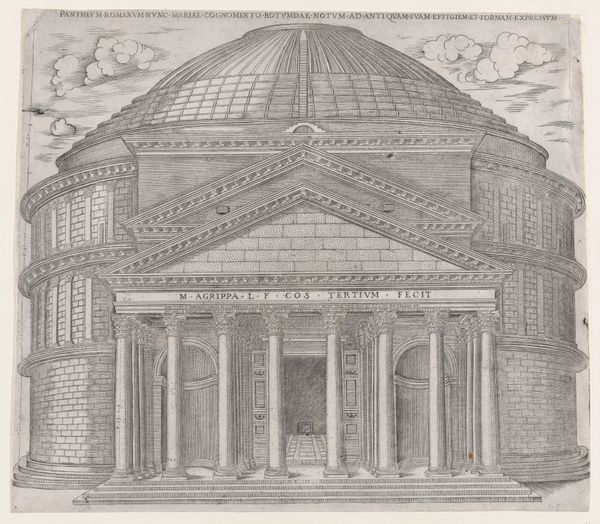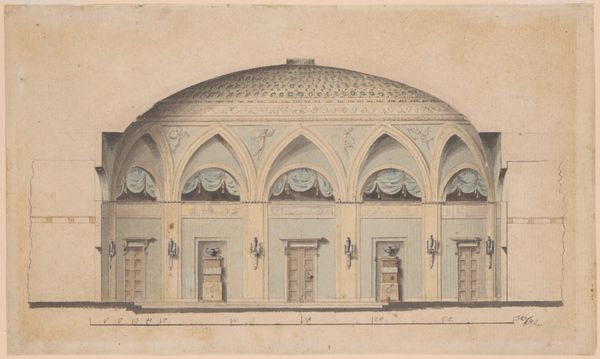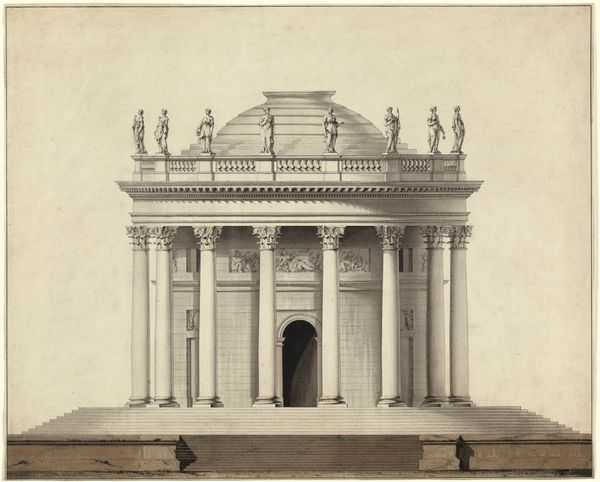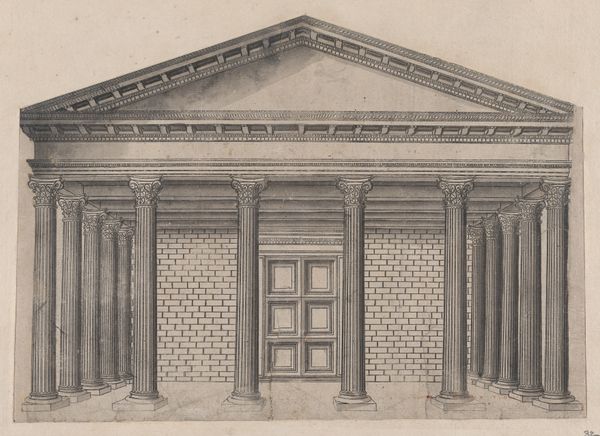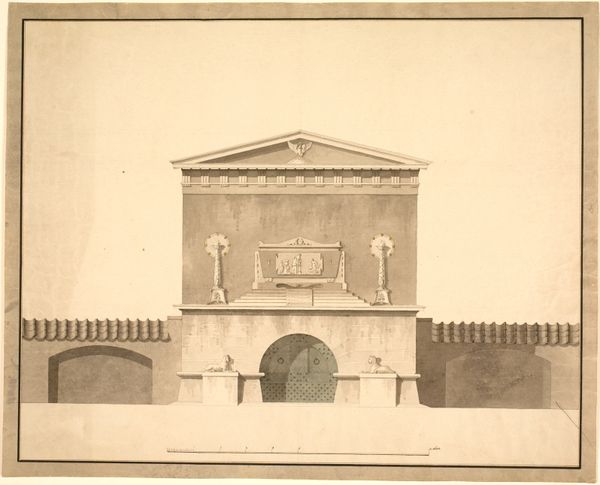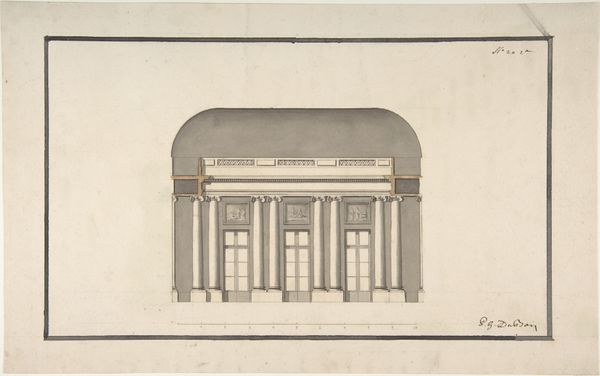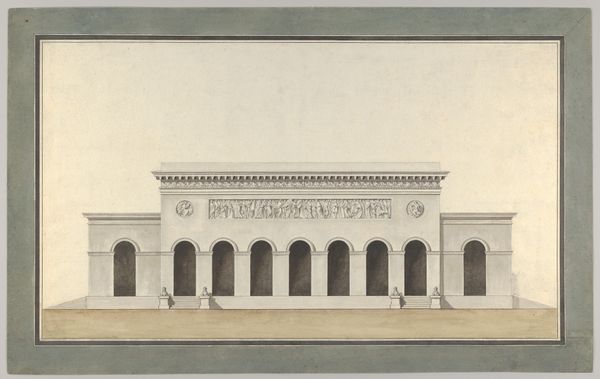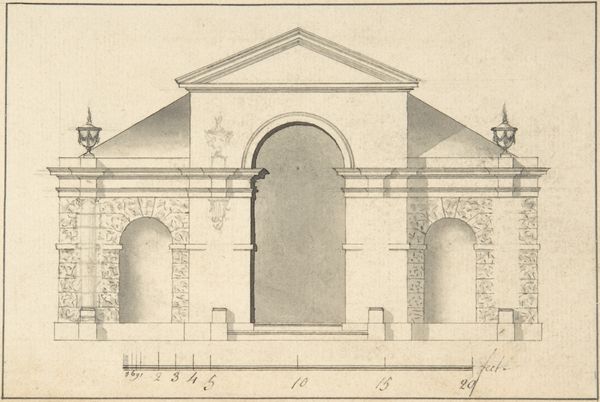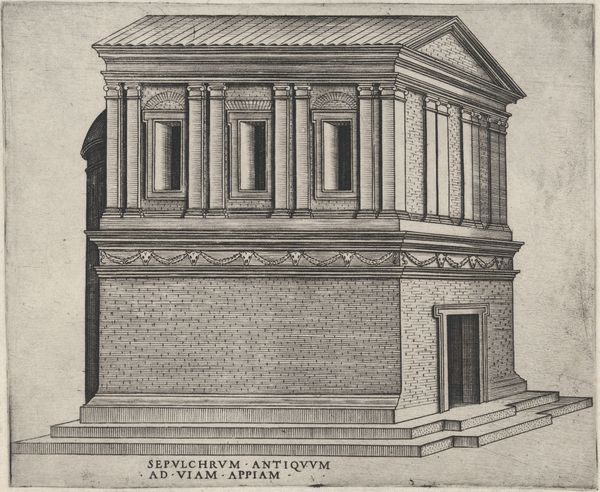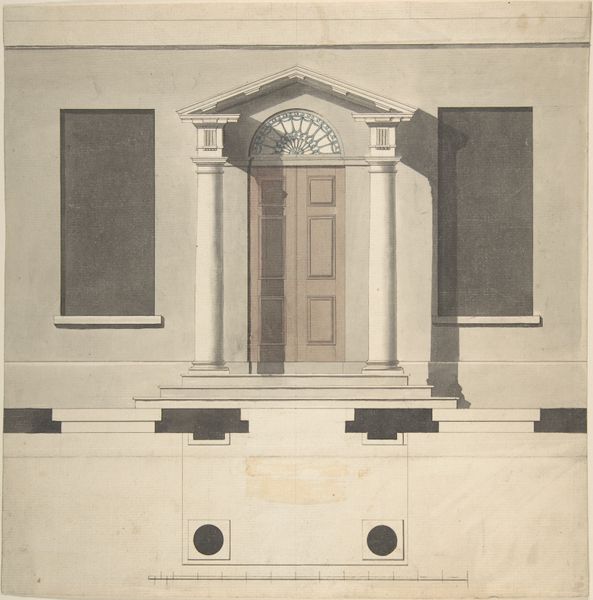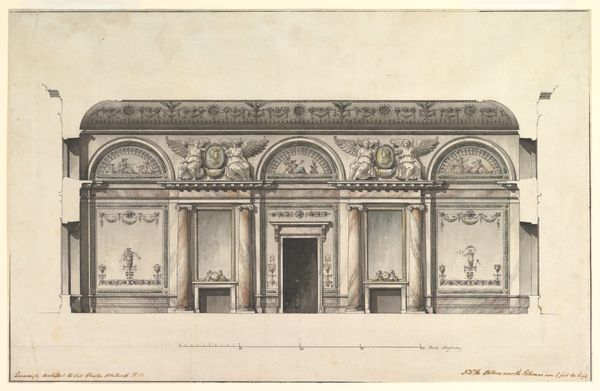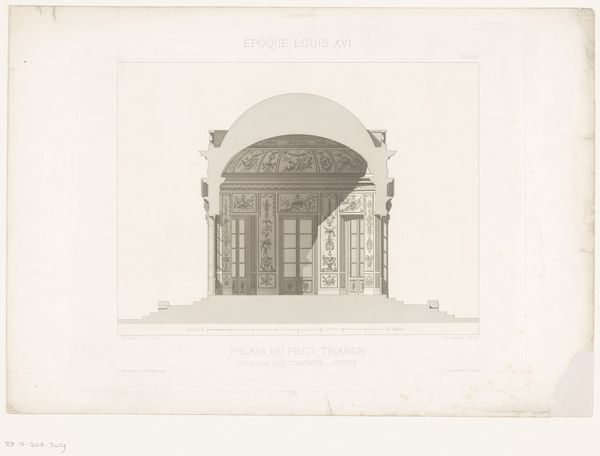
drawing, print, watercolor, architecture, pendant
#
drawing
#
neoclacissism
# print
#
landscape
#
classical-realism
#
historic architecture
#
traditional architecture
#
watercolor
#
geometric
#
arch
#
history-painting
#
watercolor
#
architecture
#
pendant
Dimensions: sheet: 30 1/4 x 40 in. (76.8 x 101.6 cm)
Copyright: Public Domain
Curator: Let's consider this work from approximately 1842 to 1852, “Architectural Project based on the Pantheon,” currently residing at the Metropolitan Museum of Art. Editor: My initial reaction is one of calm and stillness. The cool watercolors lend it a slightly melancholic air, despite the grandeur of the subject. Curator: The artistic interest in neoclassical forms connects with the resurgence of those styles through Napoleon's Empire style and subsequent aesthetic movements like the Picturesque and Romanticism. But what do you make of its social impact? Editor: The Pantheon has always symbolized power, specifically masculine authority, and architectural drawings such as these offer entry to understanding that dynamic; note how its visual language subtly excludes other interpretations of what that space could signify beyond an authoritative vision. Curator: Absolutely, we can’t detach these visual choices from historical implications—a direct gaze versus an invitation, which would perhaps open dialogue on alternative histories involving diverse participants in its development through various cultural productions, philosophical contributions—allowing marginalized stories, for example, of women participating actively—if only theoretically. Editor: That point is well-taken. Seeing the Pantheon interpreted anew also lets us explore evolving definitions associated with historical architecture within changing contemporary norms and socio-political landscapes. Considering architectural imagery’s role in affirming authority alongside questions on social inclusion helps create much deeper resonance concerning not only historical power dynamics related both artistic visions rooted inside contemporary culture itself, then what purpose its imagery still serves decades down the road amidst shifting moral priorities of public memory regarding representations throughout time! Curator: This reinterpretation encourages an expanded historical view that addresses whose vision the art embodies versus inclusive engagement embracing multiple, if less powerful stakeholders impacted upon that society by its architecture and those institutions associated since construction began nearly two thousand-year old structure through watercolor interpretation nearly two decades following Napoleon rule, demonstrating architecture impacts within different eras too.. Editor: Thank you for shedding an even wider array concerning broader discussions applicable today. Curator: Likewise – perspectives like these illuminate the importance associated both present context around what that artist drew centuries ago plus those questions brought upon now, deepening understandings about timeless visual works within public spaces over considerable time frames encompassing multiple generations since these images circulated.
Comments
No comments
Be the first to comment and join the conversation on the ultimate creative platform.
